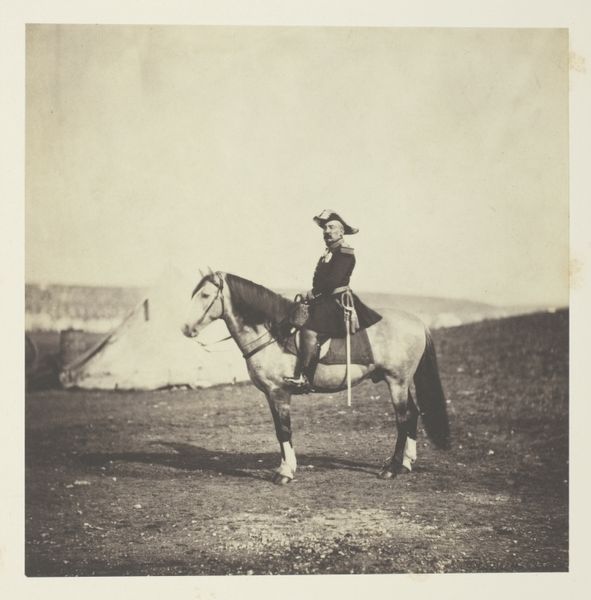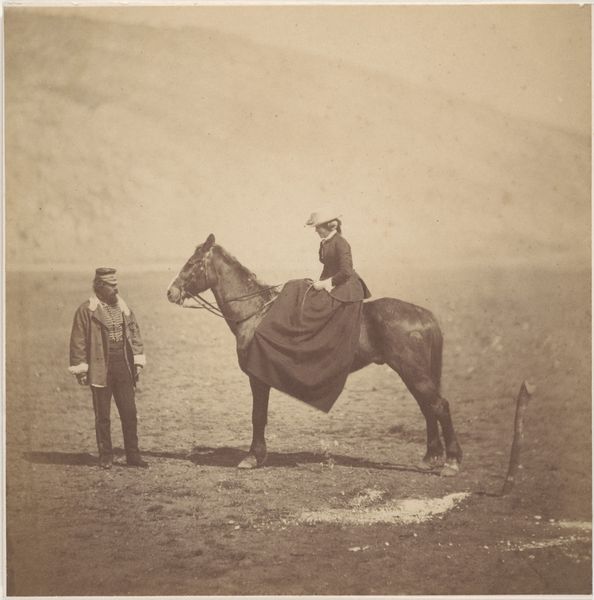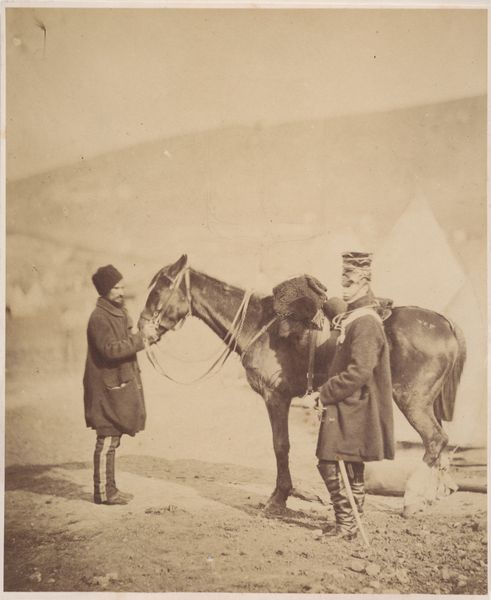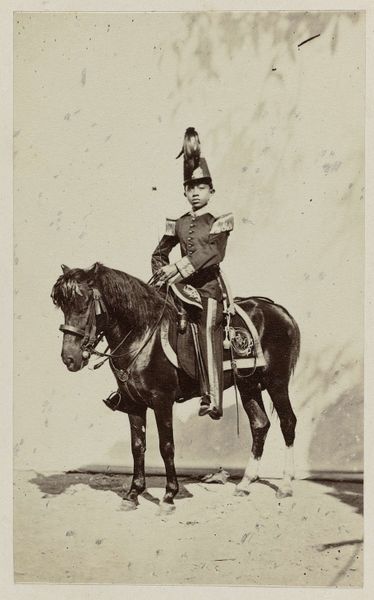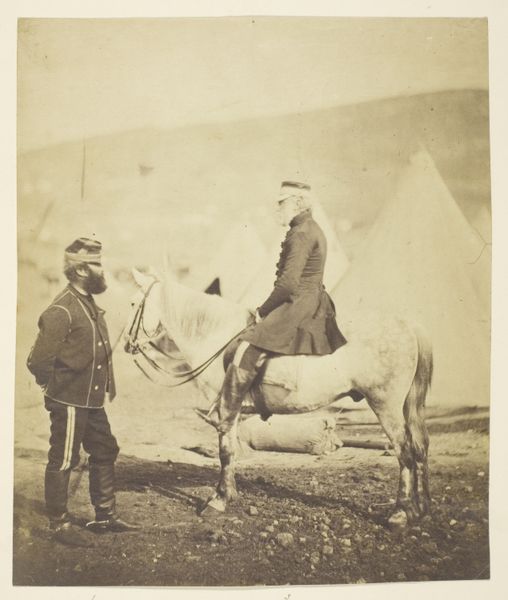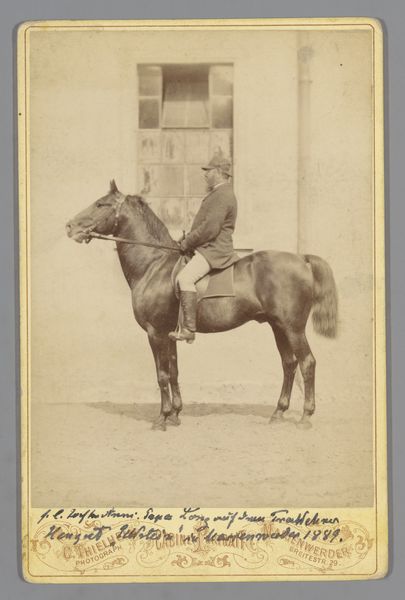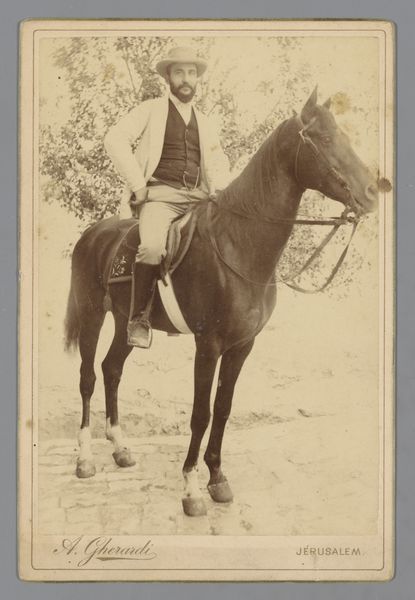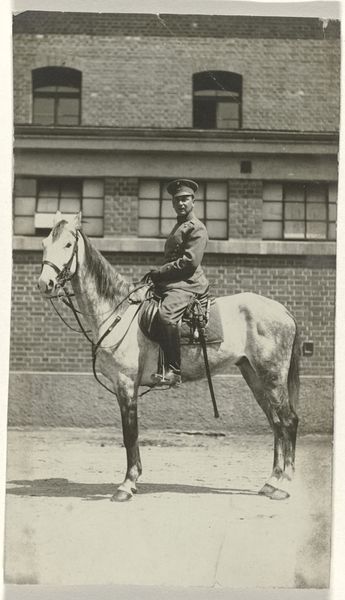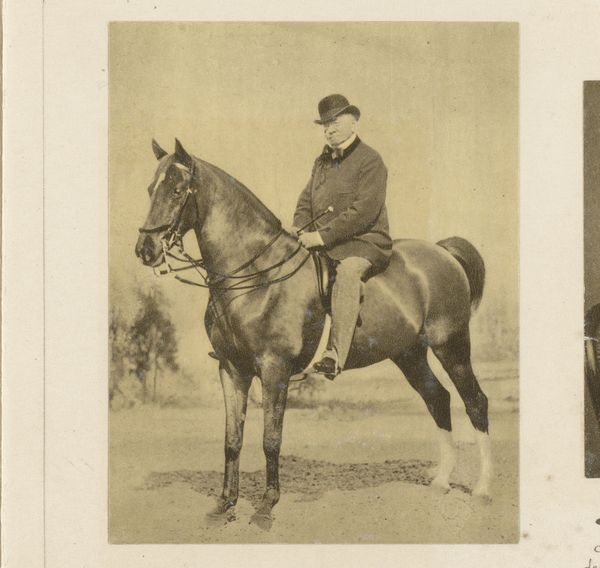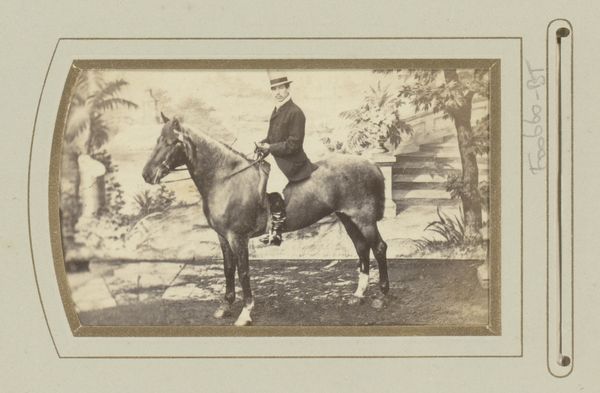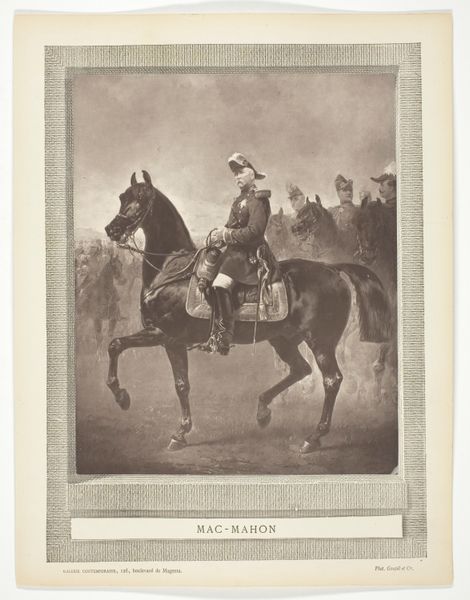
Quartermaster Hill, 4th Lt. Dragoons. The Horse taken immediately after the winter season. 1855
0:00
0:00
print, paper, photography, gelatin-silver-print, albumen-print
#
portrait
#
print photography
#
16_19th-century
# print
#
war
#
landscape
#
paper
#
photography
#
england
#
gelatin-silver-print
#
history-painting
#
albumen-print
#
realism
Dimensions: 19.4 × 16.8 cm (image/paper); 58.9 × 42.5 cm (mount)
Copyright: Public Domain
Curator: This is Roger Fenton's "Quartermaster Hill, 4th Lt. Dragoons. The Horse taken immediately after the winter season," a photograph from 1855. What's your initial impression? Editor: Bleak, almost desolate. The winter landscape feels stark and unforgiving, the lone figure of the Quartermaster somewhat stoic amidst it. Curator: Fenton, of course, is famed for his Crimean War photography. Looking closely, one notices that the print, made using the albumen process on paper, lends a remarkable texture. Can you see the subtle variations in the light on the horse’s coat? The meticulous details? It's quite unlike the starker, more propagandistic images one associates with war photography. Editor: Right, the albumen print yields such a high degree of detail. It makes me think about class structures inherent within military life during that era. Fenton clearly had the resources and connections to travel to Crimea, creating work, which then perpetuated British interests through selective portrayal of the war's effects. He gives us a composed officer and horse, not the brutal reality for many lower-ranked soldiers. Curator: The materials speak volumes, I agree. We see photography’s early capability for detail used both as objective record and manipulated narrative. There's the labor-intensive nature of creating albumen prints – from preparing the glass plates to the printing process itself. Consider, too, how these prints circulated within Victorian society – emblems of empire reproduced and consumed. Editor: And consumption is precisely it. What were people consuming in this image? Assurance that their war efforts were being carried out honorably? The stoicism almost serves as an alibi for Britain’s expansionist desires in Crimea. What is obscured here—what does Fenton choose *not* to show us? Curator: That unspoken narrative, indeed, shadows the very creation of these prints. They exist because of war and Empire. Editor: So the materials, labor and subject form one inextricable package for Victorian ideology. The picture almost sells a kind of strength and duty rooted deeply in very troubled sociopolitical grounds. Curator: A striking combination of technical mastery and political intent—something that really encapsulates photography's complicated beginnings. Editor: Absolutely. The aesthetic beauty masks the complicated narratives about identity, class, and conflict which linger beneath.
Comments
No comments
Be the first to comment and join the conversation on the ultimate creative platform.
